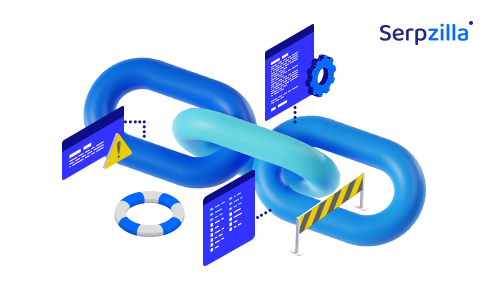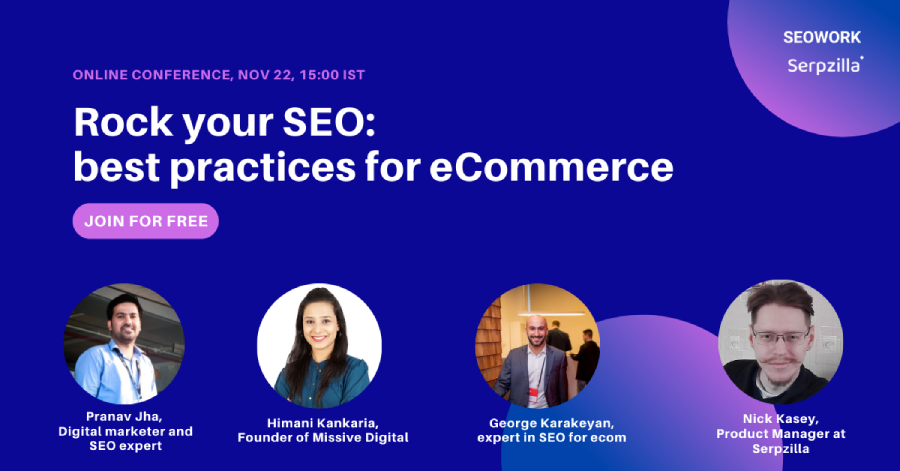SEO is a complex and ever-evolving field that requires a combination of technical knowledge, analytical skills, and creativity to succeed. As an SEO specialist, one of your key responsibilities is to help your clients achieve their business goals by improving their online visibility, driving traffic to their website, getting them higher rankings, and increasing their conversions.
All this cannot be achieved overnight. As we have emphasized before, it is important to manage client expectations in SEO. You need to educate your client and give them a clear roadmap of what you’ll achieve and until when.
However, in today’s fast-paced digital world, customers expect quick results. Whatever you tell them, they are not willing to wait for long to see the impact of SEO – especially when they’ve just started out with you.
Need for Speed in SEO: Why You Must Deliver Quick Wins
One of the main reasons why speed matters in SEO is the impact it has on customer satisfaction and trust. Customers who see quick results are more likely to be reassured by your words and estimates. They will be more engaged with your services, leading to increased trust and loyalty.
Conversely, if a customer is left waiting for months without seeing any improvement in their online visibility, they are likely to become frustrated and disengaged, which will have a negative impact on your relationship with them.
Another reason why speed matters in SEO is the impact it has on your clients’ business goals. For example, if your client is a small business owner, they are likely to have a limited budget and resources. They need to see a return on their investment (ROI) – in terms of sales or revenue – as quickly as possible to justify the expense of your services. By delivering quick wins, you can demonstrate the value of your services and help them achieve their business goals faster.
Thus, if you can get quick results, your credibility as well as likelihood of retaining the customer rises exponentially.
Let’s take a quick look at the options that can help you achieve faster results for your customers and how they can benefit SEO-specialists.
Focus on Low-Volume Queries
The first step in any SEO campaign is invariably keyword research. It is very important to choose which queries you will target at the beginning of a campaign. If the client is a small business with no brand value or content, you can’t be targeting head terms right away.
So your first step towards providing fast results for an SMB customer is to focus on low-volume queries, because these usually have lower competition and difficulty. Once you rank for low- or mid-volume queries, it will be easier to target higher volume queries as well. For example, Google Keyword Planner is one of the most common keyword tools used by SEOs. It shows you volume “ranges” as follows:
The various ranges of search volume shown by Google Keyword Planner are:
- 0-10
- 10-100
- 100-1K
- 1K-10K
- 10K-100K
- 100K-1M
- 1M+
These keyword search volume ranges are used by SEO professionals and digital marketers to gauge the level of competition and difficulty in ranking a particular keyword. They can then plan their content and advertising strategies accordingly.
The ranges help you figure out which keywords get a lot of traffic and which ones don’t. They also give you an idea of how much traffic you might potentially get from targeting a particular set of keywords.
The best way to begin an SEO and content campaign is by creating a semantic core that focuses on low- and mid-volume queries. Once you rank for queries in the 10-100 range, it will be easier for you to move to the next level – keywords in the 100-1K range. Once you attain that, you can target keywords in the 1K-10K range, and so on.
Your content will have more EEAT power with Google. Further, behavioral signals of your visitors will work in your favor. With more visitors, the average browsing time and page depth per session will increase. This will send back positive signals to Google and your pages will get more, higher impressions as a result.
A pro tip we want to share is, many SEO experts ignore zero volume keywords, assuming that nobody uses them. But you can watch the trend on these keywords and if your competitors aren’t optimizing for them, you have a leg up on the market.
If you hit upon a keyword with increasing popularity that still has less competition with well-optimized and in-depth content, it will lead to better site-wide rankings for you eventually.
Build Links
One of the biggest advantages of link building is that your client doesn’t need to take any actions (unlike in technical SEO or on-page SEO) to make progress. You don’t have to wait for the client’s programmers to update the site or make any corrections to the code. You can start link building the very first day after you sign a contract.
What’s more, links are still arguably the most important ranking factor in Google. The PageRank algorithm – that depends on the quality and quantity of links – still lies at the heart of the Google algorithm. Without link building, no site can hope to succeed in Google.
For example, you can see how building links with Serpzilla quickly helped a gardening firm in the UK achieve 10x traffic in just about 6 months:
Do not forget and always remember – sites analyze machines, not people. Until machines have surpassed the human brain in the quality of evaluation, it is not worth taking to heart what people wrote as instructions. It is necessary to check how machines (namely, in this content we are talking about search robots and search engines) react to changes made on the site.
It’s important to note that building links quickly doesn’t mean that you will get penalized. True SEO specialists never take Google’s “guidelines” as gospel. The guidelines are just that – they are not rules set in stone. So always take them with a pinch of salt. It pays to check and recheck everything you read and not blindly follow the opinion of the majority or “experts” who simply repeat what Google says.
You might have noted that after every core update, these same experts complain on Twitter or are at a loss as to why despite doing everything just as Google said, their website took a beating. On the other hand, SEOs who experiment and use their own thinking based on what works and what doesn’t achieve consistently better results.
Remember one thing: Google is after all an algorithm. Even if they tell you that they try to give what users want, ultimately the algorithm analyzes the code on your site. It can’t surpass the human brain in quality of evaluation (which is why they have human search quality raters). Ultimately, even after human inputs, the decision whether a site (and the links going to and from it) are good enough or not is made by a bot.
Use a Step-By-Step Approach
Automation is both a boon and a bane in SEO.
An on-page audit is an SEO task that can be done from a checklist. This means it can be automated, with the result that many SEO companies simply produce long lists of problems and changes to be made. In practice, this confuses the client and they approach these changes with no priority or goals. The first time they get stuck, they abandon the whole effort and the rest of the recommendations just remain unresolved.
The correct way to get clients to implement your recommendations is to spoon-feed them one task at a time instead of throwing unwieldy sheets at them. This involves breaking down each SEO process into smaller, more manageable tasks that can be tackled one at a time.
It pays to prioritize these tasks by giving them a weightage according to the impact they have and the ease of implementation. You can use the ICE scoring model – Impact, Confidence, Ease – to do this. Basically, you give a ranking from 1 to 10 for each of these and multiply the values to determine the final ICE score.
By taking a prioritized, systematic approach, you can ensure that no important tasks are overlooked. This way, your efforts won’t go in vain and the implementation process will be efficient.
Be in Touch with the Client
It is important to keep them the client informed about the status of work being done as well as what is expected of their team. The client should be aware that their participation is essential for achieving the campaign objectives. They are ultimately responsible for their own growth.
By maintaining open communication and collaboration, you can ensure that your efforts are aligned with the client’s goals and expectations. For example, if they make some changes without informing you and that results in a traffic drop, ultimately they will blame you for it, because YOU are the SEO agency.
If you want quick results, at every turn, you have to be careful that none of your or your client’s efforts are wasted.
Summing Up
In every business function or transaction today, customers expect quick results. And SEO is no exception. That’s why timely results are essential for building trust and credibility. The faster you can get results, the better your chances are of retaining the customer and build a fruitful relationship with them.
As an SEO specialist or agency, the key to success is to stay on top of the latest trends, continuously learn and experiment to find what works best for your clients. More importantly, you need to educate the client on the importance of each SEO task. Together, you can deliver quick wins and boost sales and revenue to the next level.








